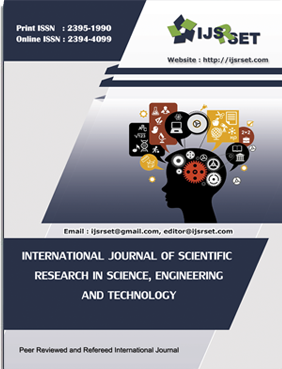An Optimized Data Storage in A Secure Cloud-Edge Collaboration A Fault Tolerance Approach
DOI:
https://doi.org/10.32628/IJSRSET2411255Keywords:
Edge storage systems, Quality of Experience, Fault Tolerance Ability, Secure Fault-Tolerant Storage Scheme, Edge Data Privacy, Data Writing Performance, Hierarchical Cloud-Edge Collaborative Fault-Tolerant Storage (HCEFT) Model, System Robustness, Data Writing Optimization Method, Data Robustness, Availability, SecurityAbstract
The rise of edge smart IoT devices has led to the development of edge storage systems (ESS) for efficient access to massive edge data. ESS can reduce the load on cloud centers and improve user experience. However, ESS still faces challenges in improving fault tolerance and efficiency. Thus, there is a need for a secure and efficient fault-tolerant storage scheme. Existing schemes have drawbacks like high edge storage overhead, difficulty in protecting edge data privacy, and low data writing performance. To address these issues, we propose a Hierarchical Cloud-Edge Collaborative Fault-Tolerant Storage (HCEFT) model. This model aims to enhance system robustness, reduce edge storage overhead, and ensure edge data privacy. We also introduce an optimization method for data writing in HCEFT, called ECWSS (Erasure Code data Writing method based on Steiner tree and SDN). This method improves the trade-off between data writing time and traffic consumption. Our scheme improves data robustness, availability, and security. Additionally, the writing optimization method reduces data write time by 13%-67% and network traffic consumption by 20%-62%, enhancing network load balance performance.
📊 Article Downloads
References
T. Wu, G. Jourjon, K. Thilakarathna, and P. L. Yeoh, "MapChainD: A distributed blockchain for IIoT data storage and communications," IEEE Trans. Ind. Informat., early access, Jan. 6, 2023, doi: 10. 1109/TII.2023.3234631.
S. H. A. Kazmi, F. Qamar, R. Hassan, and K. Nisar, "Routing-based interference mitigation in SDN enabled beyond 5G communication networks: A comprehensive survey,"IEEE Access, vol. 11, pp. 4023–4041, 2023. DOI: https://doi.org/10.1109/ACCESS.2023.3235366
B. W. Nyamtiga, A. A. Hermawan, Y. F. Luckyarno, T. Kim, D. Jung, J. S. Kwak, and J. Yun, "Edge-computing-assisted virtual reality computation offloading: An empirical study," IEEE Access, vol. 10, pp. 95892–95907, 2022. DOI: https://doi.org/10.1109/ACCESS.2022.3205120
M. Carrie and R. David, The Growth in Connected IoT Devices is Expected to generate 79.4ZB of Data in 2025, According to a New IDC Forecast. Accessed: Apr. 8, 2023.
R. van der Meulen. What Edge Computing Means for Infrastructure and Operations Leaders? Accessed: Apr. 8, 2023
L. A. Haibeh, M. C. E. Yagoub, and A. Jarray, "A survey on mobile edge computing infrastructure: Design, resource management, and optimization approaches" IEEE Access, vol. 10, pp. 27591–27610, 2022. DOI: https://doi.org/10.1109/ACCESS.2022.3152787
H. Zhang, Y. Yang, X. Huang, C. Fang, and P. Zhang, "Ultra-low latency multi-task offloading in mobile edge computing," IEEE Access, vol. 9, pp. 32569–32581, 2021. DOI: https://doi.org/10.1109/ACCESS.2021.3061105
S. Li and T. Lan, "HotDedup: Managing hot data storage at network edge through optimal distributed deduplication," in Proc. IEEE INFOCOM Conf. Comput. Commun., Jul. 2020, pp. 247–256. DOI: https://doi.org/10.1109/INFOCOM41043.2020.9155233
L. Yuan, Q. He, F. Chen, J. Zhang, L. Qi, X. Xu, Y.Xiang, and Y. Yang, "CSEdge: Enabling collaborative edge storage for multi-access edge computing based on blockchain," IEEE Trans. Parallel Distrib. Syst., vol. 33, no. 8, pp. 1873– 1887, Aug. 2022. DOI: https://doi.org/10.1109/TPDS.2021.3131680
S. Kisseleff, S. Chatzinotas, and B. Ottersten,"Reconfigurable intelligent surfaces in challenging environments: Underwater, underground, industrial and disaster," IEEE Access, vol. 9, pp. 150214– 150233,2021. DOI: https://doi.org/10.1109/ACCESS.2021.3125461
X. Gao, W. Bao, X. Zhu, G. Wu, and L. Liu, "An edge storage acceleration service for collaborative mobile devices," IEEE Trans. Services Comput., vol. 15, no. 4, pp. 1993–2006, Jul. 2022. DOI: https://doi.org/10.1109/TSC.2020.3029136
A. Aral and T. Ovatman, "A decentralized replica placement algorithm for edge computing," IEEE Trans. Netw. Service Manage. vol. 15, no. 2, pp. 516–529, Jun. 2018. DOI: https://doi.org/10.1109/TNSM.2017.2788945
M. Linaje, J. Berrocal, and A. Galan-Benitez,"Mist and edge storage: Fair storage distribution in sensor networks," IEEE Access, vol. 7, pp. 123860– 123876, 2019. DOI: https://doi.org/10.1109/ACCESS.2019.2938443
L. Liang, H. He, J. Zhao, C. Liu, Q. Luo, and X. Chu, "An erasurecoded storage system for edge computing," IEEE Access, vol. 8, pp. 96271–96283, 2020. DOI: https://doi.org/10.1109/ACCESS.2020.2995973
Y. Wu, D. Liu, X. Chen, J. Ren, R. Liu, Y. Tan, and Z. Zhang, "MobileRE: A replicas prioritized hybrid fault tolerance strategy for mobile distributed system," J. Syst. Archit., vol. 118, Sep. 2021, Art. no. 102217. DOI: https://doi.org/10.1016/j.sysarc.2021.102217
Downloads
Published
Issue
Section
License
Copyright (c) 2024 International Journal of Scientific Research in Science, Engineering and Technology

This work is licensed under a Creative Commons Attribution 4.0 International License.




